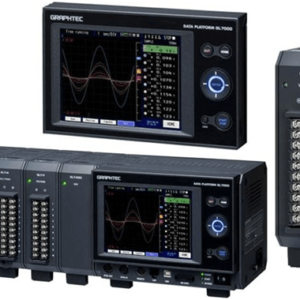Introduction
In today’s data-driven world, precise and reliable data collection is crucial for industries like manufacturing, research, healthcare, automotive, and energy. One of the key technologies that makes this possible is the Data Acquisition System (DAS). This system plays an essential role in capturing, monitoring, and analyzing physical phenomena such as temperature, pressure, sound, and vibration in real-time, providing valuable insights for process optimization, product development, and research.
Data acquisition systems can be categorized into two main types: single-channel and multi-channel. Each type is suited for different applications, depending on the complexity and volume of data required. In this blog, we will explore the basics of data acquisition systems, the differences between single-channel and multi-channel systems, their applications, and the benefits of each.
What is a Data Acquisition System (DAS)?
A Data Acquisition System (DAS or DAQ) is an arrangement of hardware and software designed to measure physical parameters from the real world and convert them into digital data that can be analyzed and processed on a computer. A typical data acquisition system comprises the following components:
- Sensors: Devices that convert physical phenomena (such as temperature, pressure, or force) into electrical signals.
- Signal Conditioning: This part processes and amplifies signals from sensors, ensuring they are within the required range for accurate measurement.
- Analog-to-Digital Converter (ADC): Converts the conditioned analog signal into a digital form for further analysis.
- Data Processing Software: Software that stores, displays, and analyzes the collected data for actionable insights.
Whether it’s monitoring industrial processes, running experiments, or testing product performance, a DAS ensures accurate data collection and analysis, contributing to improved decision-making.
Single-Channel Data Acquisition System
A single-channel data acquisition system is designed to capture data from one sensor or signal source at a time. This type of DAS is ideal for simple applications where only one type of data needs to be recorded and analyzed.
Key Features of Single-Channel DAS:
- Cost-Effective: Single-channel systems are more affordable compared to multi-channel options, making them ideal for basic applications or small-scale testing.
- Easy to Use: With fewer components and simpler setup, single-channel DAS is straightforward to configure and use, especially for beginners.
- Suitable for Basic Measurements: These systems are perfect for applications where only one variable needs to be measured, such as temperature monitoring in an oven or pressure testing in a single pipe.
Applications of Single-Channel DAS:
- Temperature Monitoring: Single-channel systems are often used to monitor temperature in industrial settings, ovens, refrigerators, or freezers.
- Pressure Measurement: In testing environments like laboratories, a single-channel DAS can be used to monitor pressure within a specific piece of equipment.
- Basic Research and Development: Ideal for simple R&D applications where a single physical parameter is measured.
Benefits of Single-Channel DAS:
- Affordability: These systems are typically cheaper and are a good fit for applications with limited budgets.
- Simplicity: Since the system focuses on one signal at a time, it is less complex and easier to operate.
- Efficiency in Simple Tasks: Perfect for straightforward data acquisition tasks where multi-channel systems would be overkill.
Multi-Channel Data Acquisition System
A multi-channel data acquisition system is designed to capture data from multiple sensors or signal sources simultaneously. These systems are suitable for more complex applications where various types of data must be collected and analyzed in real-time.
Key Features of Multi-Channel DAS:
- Simultaneous Data Capture: Multi-channel systems allow the collection of multiple signals, such as temperature, pressure, and vibration, at the same time, which is crucial for complex testing environments.
- Higher Throughput: Multi-channel systems can handle large volumes of data, making them suitable for industries where numerous parameters must be monitored continuously.
- Flexible Data Integration: Multi-channel DAS is often designed to integrate data from different sensor types, enabling cross-analysis and comprehensive system monitoring.
Applications of Multi-Channel DAS:
- Automotive Testing: Multi-channel systems are used in vehicle testing to capture data from multiple sensors measuring speed, engine temperature, fuel consumption, and other critical metrics.
- Industrial Process Monitoring: In large-scale manufacturing, multi-channel DAS monitors various parameters such as pressure, temperature, and humidity across several machines simultaneously.
- Aerospace and Defense: Multi-channel systems are essential for testing aircraft, spacecraft, and defense equipment, where a variety of data streams must be captured and analyzed concurrently.
Benefits of Multi-Channel DAS:
- Efficiency for Complex Applications: Multi-channel DAS enables the simultaneous acquisition of data from multiple sources, increasing efficiency in complex applications.
- Comprehensive Analysis: By capturing multiple data points simultaneously, multi-channel systems allow for more comprehensive testing and analysis, which is especially useful for diagnosing issues in large systems.
- Scalability: Multi-channel systems can scale according to the number of inputs, making them highly adaptable to different application sizes.
Differences Between Single and Multi-Channel DAS
1. Number of Inputs:
- Single-Channel: Limited to one input, ideal for basic or isolated measurements.
- Multi-Channel: Can capture data from multiple inputs, suitable for complex and large-scale applications.
2. Cost:
- Single-Channel: More affordable, making it accessible for small projects and simple data acquisition needs.
- Multi-Channel: Typically more expensive due to the need for additional hardware and software for handling multiple data streams.
3. Complexity:
- Single-Channel: Simpler to set up and use, requiring less expertise.
- Multi-Channel: More complex, with the ability to handle multiple signals and more detailed configuration options.
4. Data Volume:
- Single-Channel: Lower data volume due to the focus on a single data point at a time.
- Multi-Channel: Handles large volumes of data, providing detailed insights across various parameters.
5. Application Scope:
- Single-Channel: Best for single-variable monitoring or testing in basic environments.
- Multi-Channel: Essential for industries that require comprehensive monitoring, such as automotive, aerospace, and industrial manufacturing.
Conclusion
Data acquisition systems, whether single-channel or multi-channel, are critical for collecting accurate and reliable data in a variety of industries. While single-channel systems are ideal for simple, cost-effective applications, multi-channel systems offer the versatility and power needed for more complex environments where multiple parameters must be measured simultaneously.
Choosing the right data acquisition system depends on the specific requirements of your application. If you need to measure just one parameter, a single-channel system will suffice, but for more complex tasks, a multi-channel DAS is the better option. Both types contribute to improved decision-making, ensuring that processes run smoothly and efficiently.


